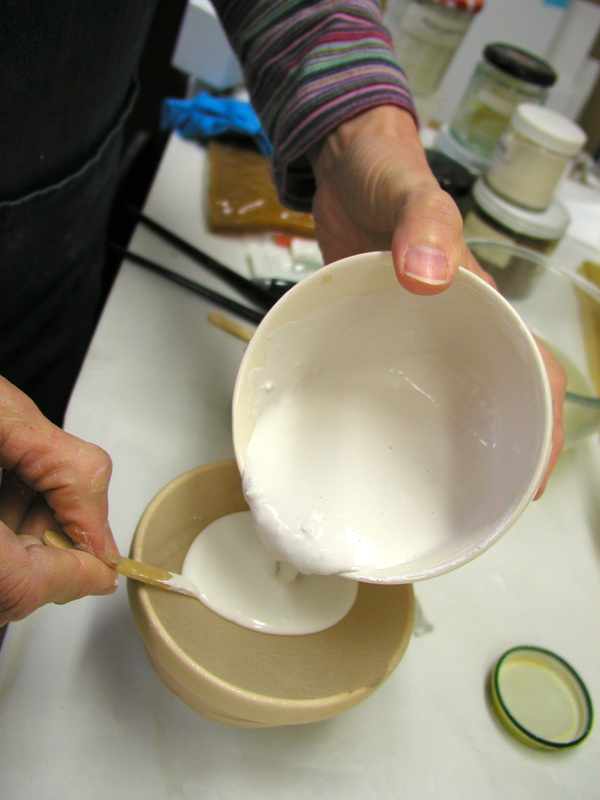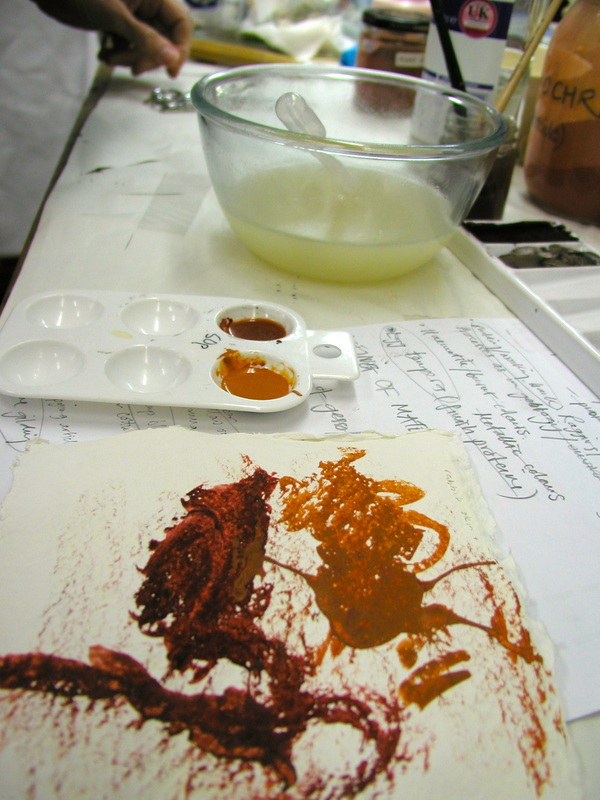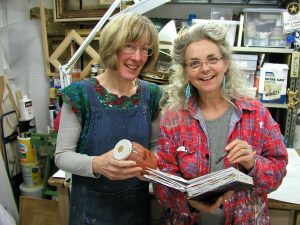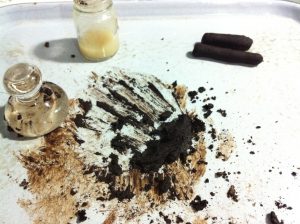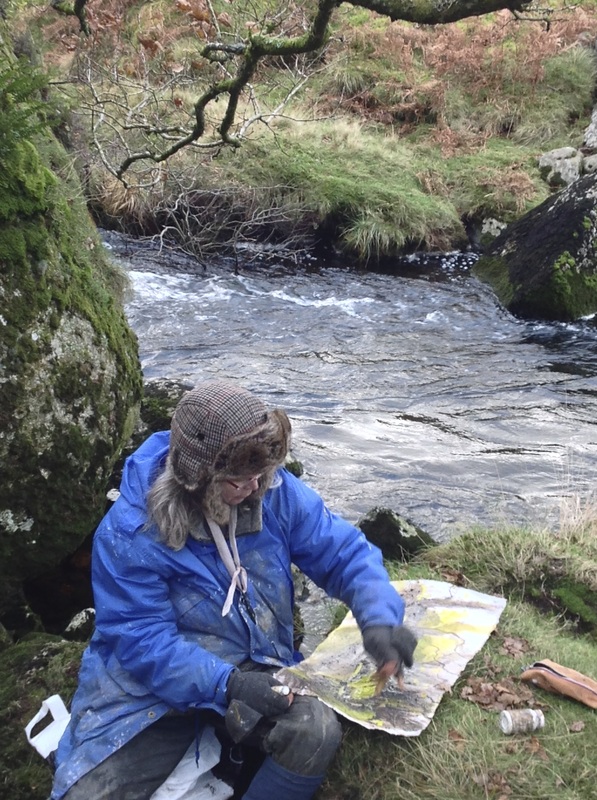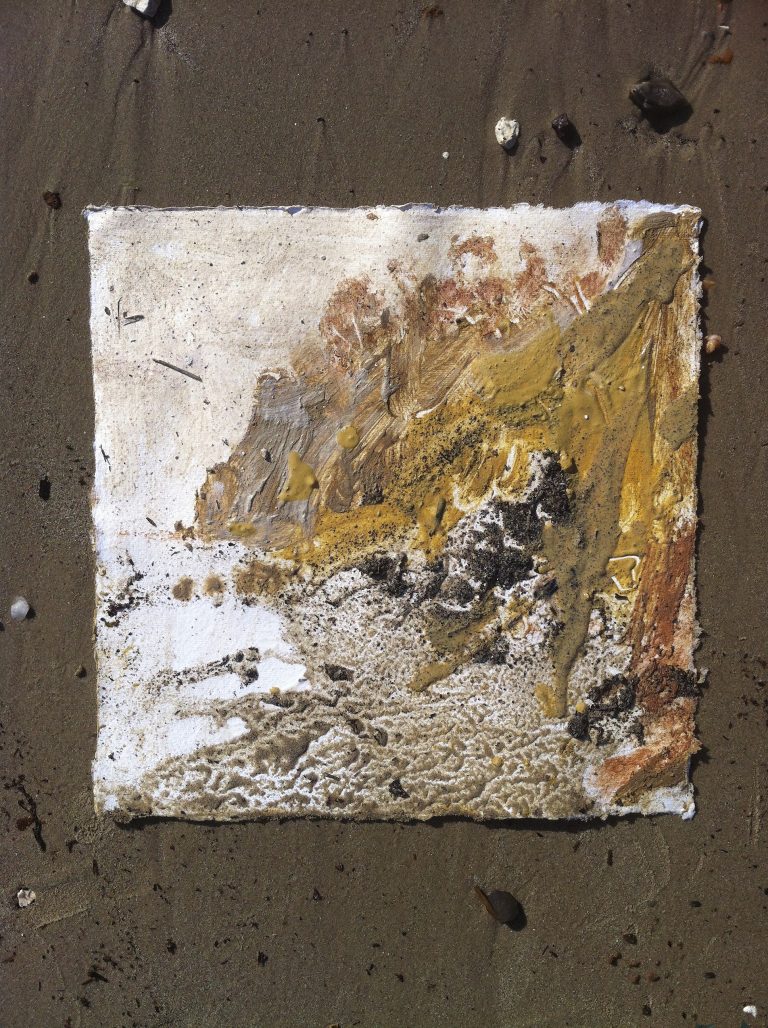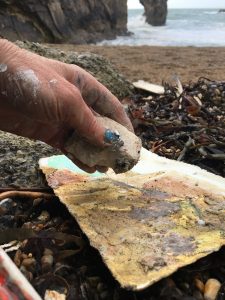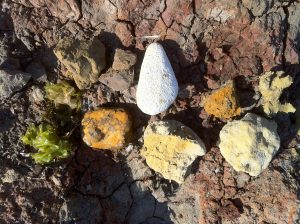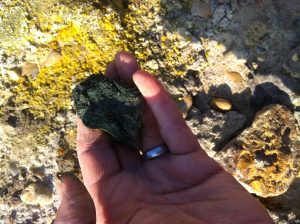WHAT WHY HOW
Plein air practice is core to what I make because it is experiences that occur out of doors ‘in nature’ that awake in me the desire to respond creatively.
A site responsive attitude accurately identifies my stance: I am a participant in a conversation with the land. I respond rather than impose- working with what is given.
I use water based media (watercolour, acrylic and gouache) because of their solubility in water: rain, snow, humidity, wind, temperature all affect the way the materials respond to the support. I welcome their trace.
By foraging and testing my environment for potential tools and pigments I’m getting to know it…that is important. I like to get to know a place and based on what it offers me, I can respond ‘in kind’…
When I’ve identified pigments and tools on location I can then begin to work with them…find out what it is they like to do…what they resist. They become part of the piece. I bring my own contributions. We work together.
MEETING THE PLACE: GETTING TO KNOW IT:
‘Having been taken one day by my father…to a small valley and into a very wild grotto and digging with a spade, I saw veins of many different colours, namely of ocre, light and dark sinopia, blue and white: and it seemed to be the greatest miracle in the world!’
Cennino Cennini. ‘Il Libro dell’Arte’, probably written in the late 1390s and translated here by Daniel Thompson.

'
PALETTE OF PLACE
What I call ‘place palettes’ are in effect one of the ways I introduce myself to a place. I meet all the various characters of earths and ‘stuff’ that happen to be present at that particular time. Every palette is unique. It has a dialect and personality: creamed, putty-like, unyielding, I learn about these individual expressions of place by fingering and testing. I include in these palettes both ancient and modern: geological samples, litter, organic matter. I’m testing things.
Charmouth’s (Dorset) shore line is mobile and malleable- particularly after prolonged rain when Blue Lias, Greensand and Gault slump to the shore where they get licked clean. Marloes Sands (Pembrokeshire) has angular Silurian strata boulders bigger than houses as well as soft reds that melt into the sea. Budleigh Salterton (Devon) offers a richly pigmented source of pigments including delicious Triassic reds. Tools and pigments are gathered to become my palette of marks and mixtures. Each visit to an identical area yields a different palette.
Matter migrates – at different rates. Elements I use to make my paintings do exactly that on my support. They find their own relationship with each other.
The unconsolidated material requires a binding medium and vehicle to make a paint. Here I employ animal protein size, acrylic, gum arabic or cherry tree gum depending on circumstance.
binding mediums
CONSOLIDATION
Making images using local materials requires me to consider stability. Earth colours are immensely light-fast. They sometimes need grinding (with muller), grating (cheese grater) or suspending in water in order to use them. Once rendered into a form that I can use, a binding medium is required to make paint out of unbound material. There are many possibilities (egg, oil, gum arabic for example). I elect to use an acrylic emulsion or a traditional animal protein binder. They both behave very differently. Acrylic medium is forgiving and easy going. Animal binding medium (rabbit skin glue) requires an exactitude and discipline in usage. I’ve learned everything I know from Judith Wetherall (lecturer, practitioner and conservator in gilding and decorative arts) about traditional use of this in order to understand ways it could be appropriated to my practice.
Animal protein binding medium
I was interested in working with traditional techniques that allow me to connect through a long history of binding mediums back to the animal fats of Stone Age forebears. Below is an exploration of animal protein glue and the integration and consolidation of locally sourced materials in Judith Wetherall’s studio (below). I had to adapt what I learned about the materials in order to take this process outside on site. Rabbit skin glue needs to be kept warm- this presents an obvious challenge!
ACRYLIC MEDIUMS
Acrylic mediums are much easier to work with on site. They are many and various: possessing with varying properties…fluid, gels, pastes, retarding mediums, consolidating mediums…they dry with differing finish….matt, satin, gloss…they all serve different purposes. The paper remains flexible when the medium dries. I grind the pigment or mix with the binding medium making sure I have sufficient for consolidation.


